The National League of Cities and Stanford Legal Design Lab are proud to launch the Local Eviction Prevention Policy and Program Tool.
The Local Eviction Prevention Policy and Program Tool tracks 16 different policies and programs across 200 cities totaling over 600 actions taken by cities with representation across city size and every state and the District of Columbia. This tool is designed for local housing staff, elected officials, researchers and community-based and non-profit organizations who want to take preventive action.
This work is the culmination of the direct eviction prevention support provided to 44 cities across three technical assistance programs by the National League of Cities and the Stanford Legal Design Lab. By using this tool, local leaders can better understand the legislative and programmatic action cities are taking to prevent evictions and take inspiration back to their community.
How to Use the Tool
There is no comprehensive repository of local eviction prevention efforts nationwide. This tool intends to fill that gap and aims to help users explore what other policies and programs cities have enacted; identify the policy and program models that may be effective and translatable to the user’s community; and find additional resources that might help users take the next step.
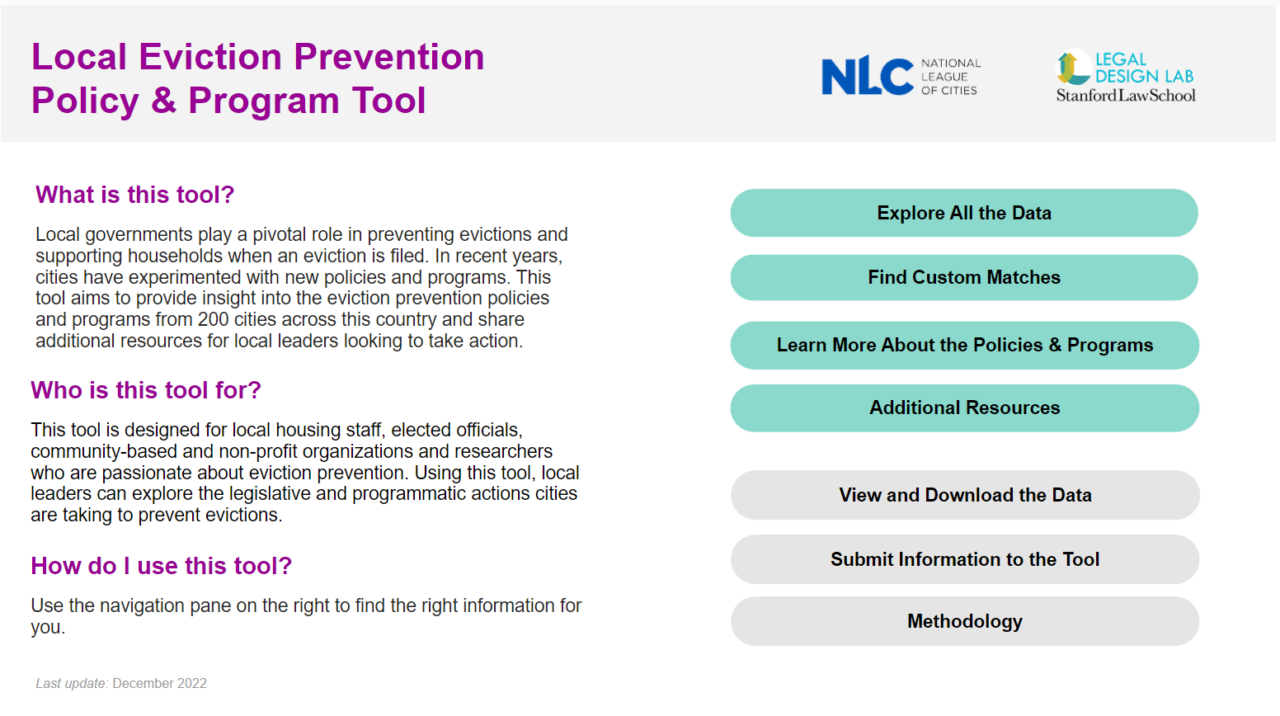
Using the “Explore All the Data” button, users can navigate through all the policies and programs included in this tool. Users can explore the cities that have enacted Right to Counsel programs or Tenant Education programs, for example. Every city program or policy is accompanied by a link either to the program page or the policy (or ordinance) in Municode or Legistar, enabling users to learn more about the specifics of a city’s action and approach.
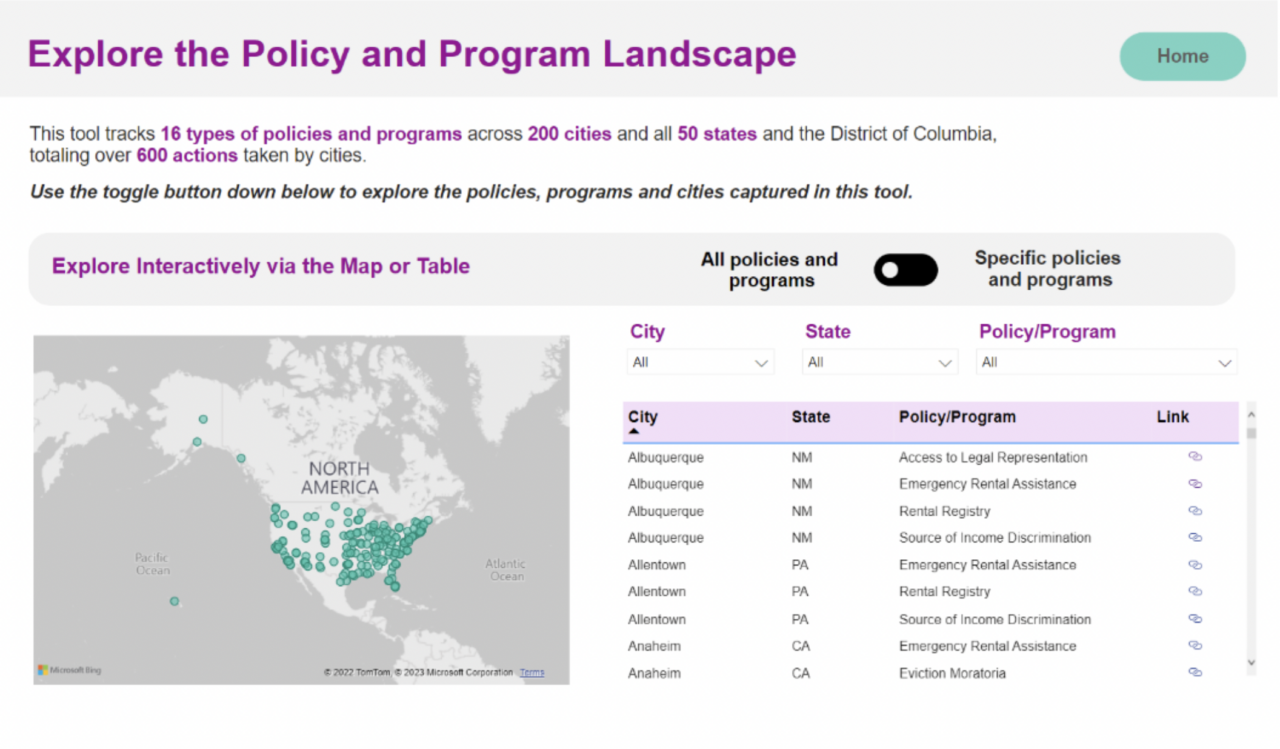
While there are theoretically many policy and program options at any given city’s disposal, different communities will require different approaches to eviction prevention.
Users interested in more guidance on which eviction prevention actions might be appropriate for their community should use the “Find Custom Matches” page. On this page, users can find policy and program matches and city examples that fit key characteristics, such as when a policy or program intervenes during an eviction — before an eviction filing, during eviction proceedings or after an eviction judgment. Some cities may have programs to support a household after an eviction judgment but could benefit from more upstream interventions that potentially prevent or divert an eviction. This page allows users to find the right matches based on what a given community’s needs are by using filters for policies and programs, region, eviction phase and city population category.
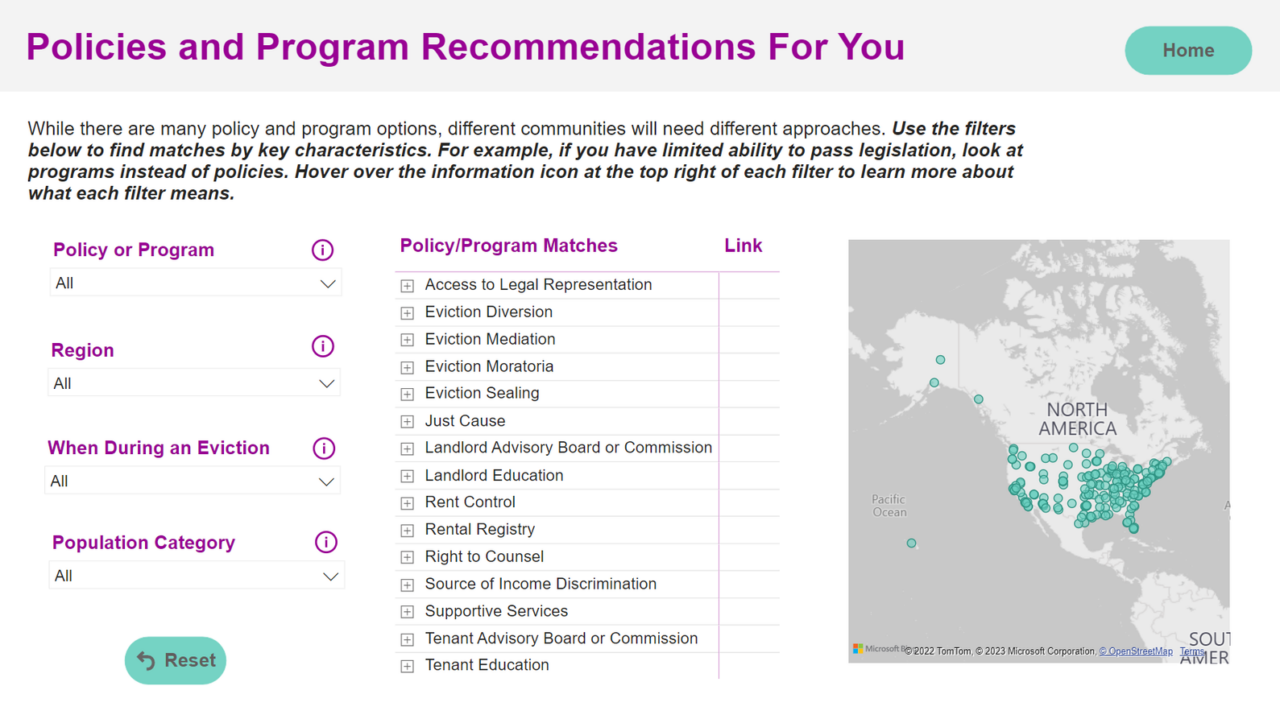
For those who are not very familiar with eviction prevention policies and programs, navigate to the “Learn More About the Policies and Programs” for more information. On this page, users can find more information about different approaches to eviction prevention and when a policy or program intervenes during the phases of an eviction.
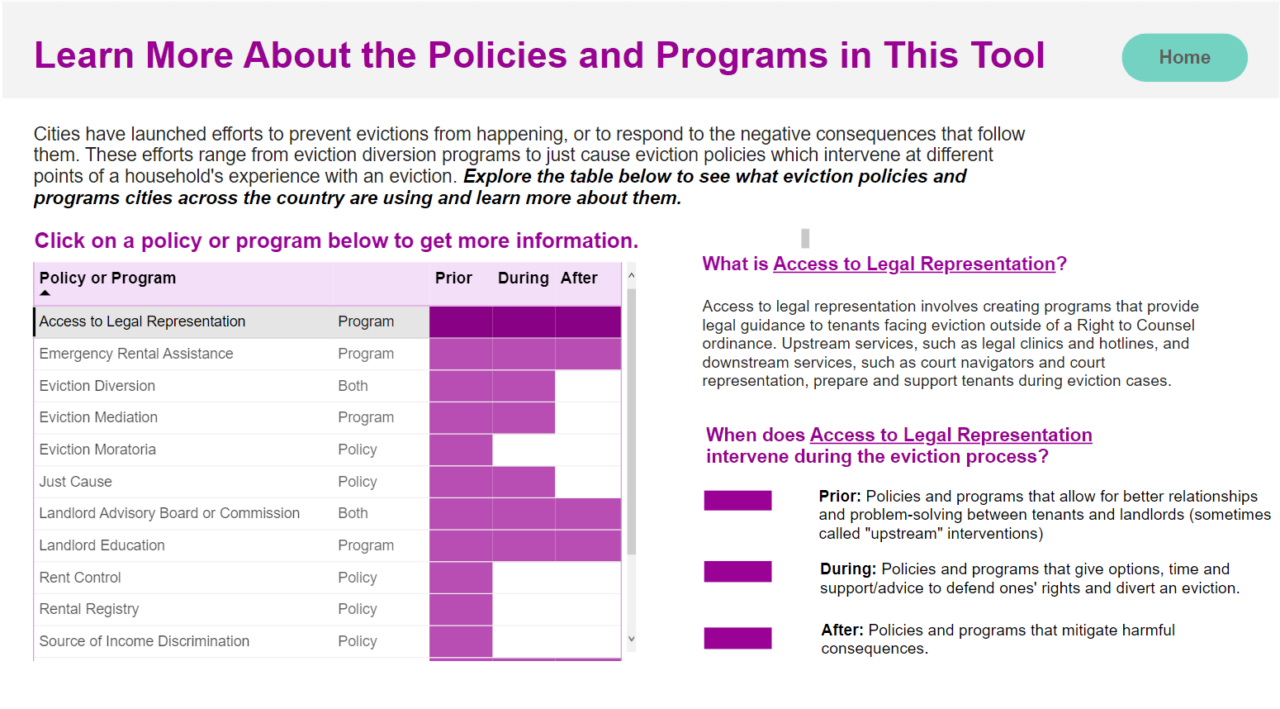
In addition to information on cities and their policy and program actions, the researchers have also complied a growing list of program-specific resources to help city leaders take the next step in making an eviction prevention policy or program a reality in their community. “Action-oriented” resources were prioritized for inclusion.
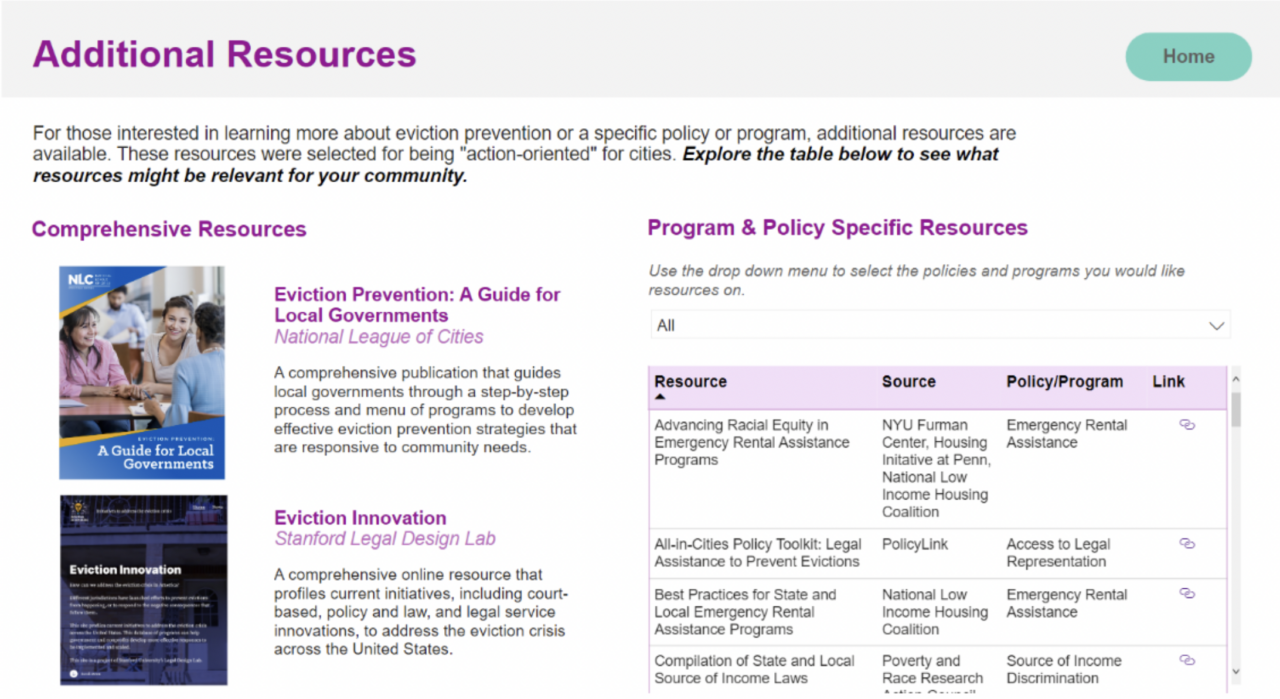
Contribute to This Open-Source Tool
This tool intends to spark ideas and spur knowledge sharing about local eviction prevention efforts nationwide. Many more cities, towns and villages are taking action to foster housing stability and equitably address the eviction crisis than are represented in this tool.
If details about your city’s eviction prevention efforts are not included, consider sharing that information through the “Submit Your Information” tab on the tool so that we can collectively advance eviction prevention. If you have an action-oriented resource that would be helpful for local leaders looking to pass or implement a specific policy or program, please consider sharing that resource, too.
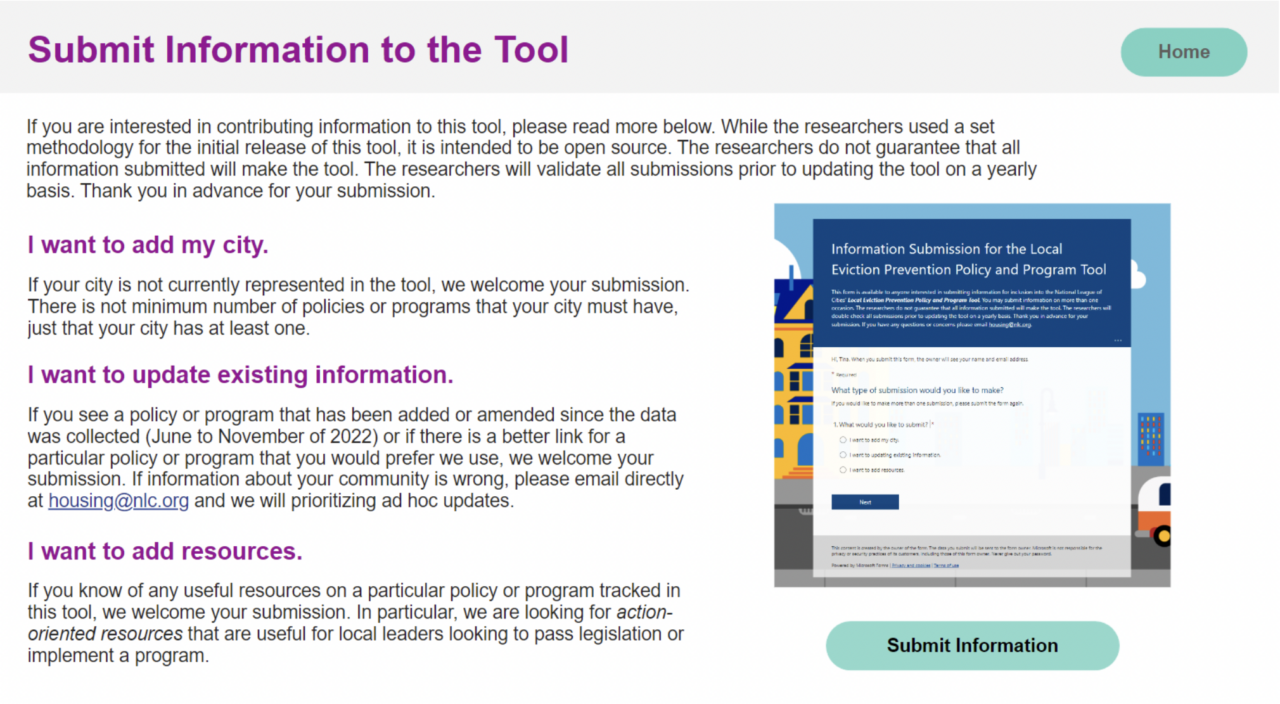
What’s Next
The prevalence of evictions is a profound reflection of poverty and racial, socioeconomic and gender inequities which has years- and generations-long ripple effects on individuals, households, communities, and cities. With better and more transparent insight into the policies and programs cities employ to tackle the eviction crisis, we can collectively share and disseminate information to build more effective and informed responses to keep people stably housed.
Local Eviction Prevention Policy and
Program Tool Demo
Register for the Local Eviction Prevention Policy and Program Tool Demo at 2:00PM Tuesday, February 21 to learn how to use the tool. Connect with other local leaders passionate about eviction prevention, and ask the researchers questions.
The authors wish to thank Samantha Steeves, a former intern on the Housing & Community Development team for their contributions.












